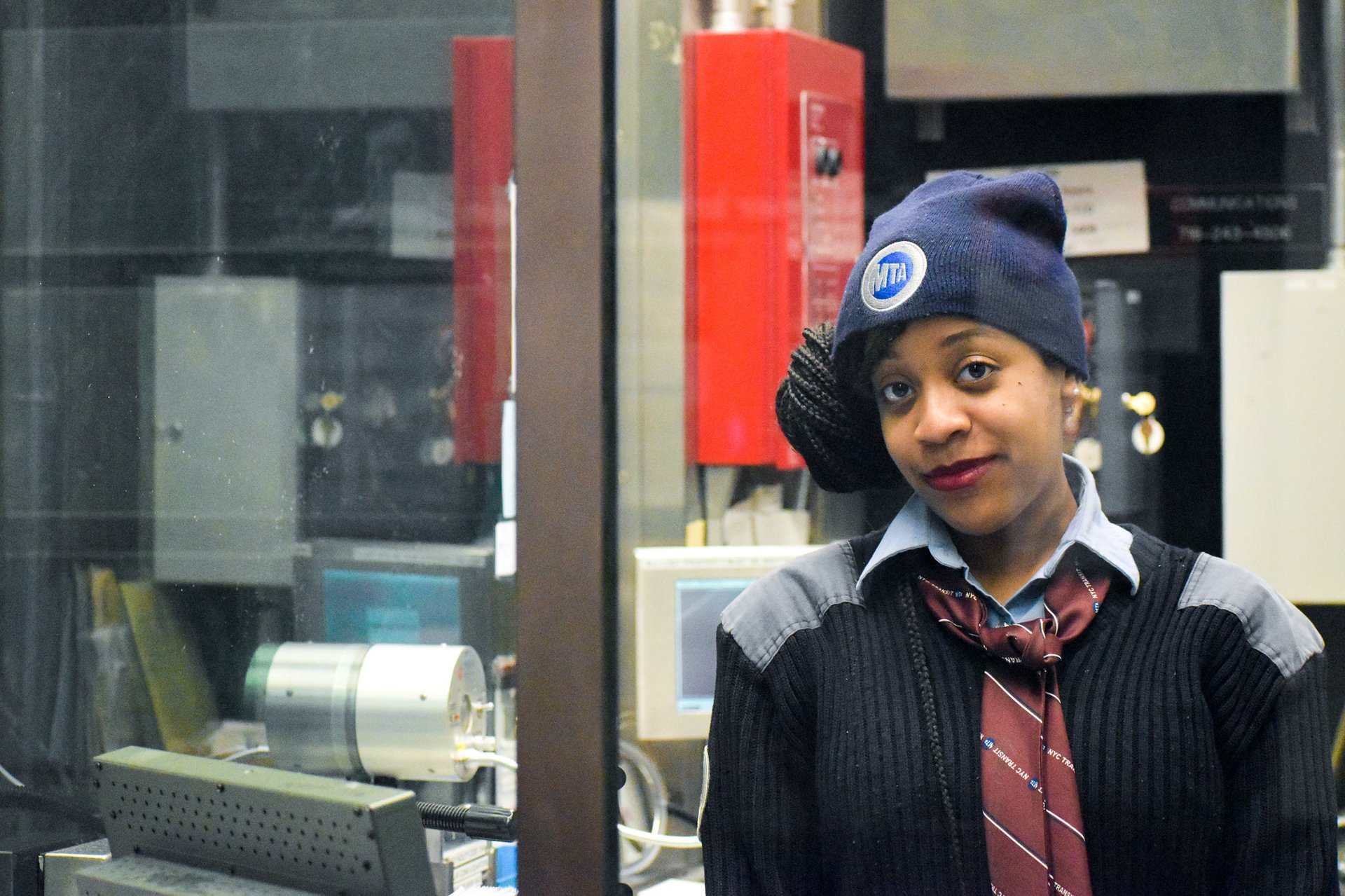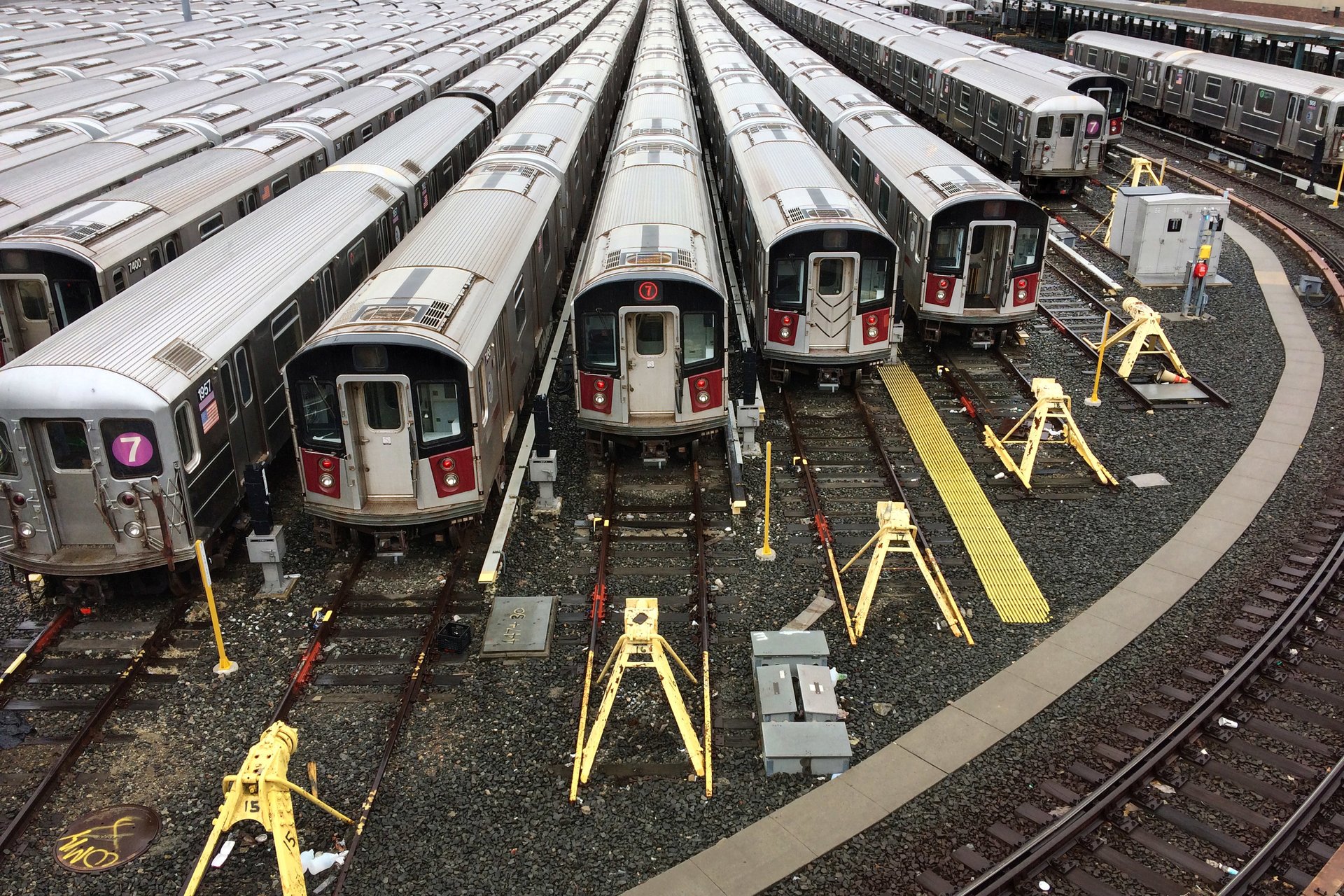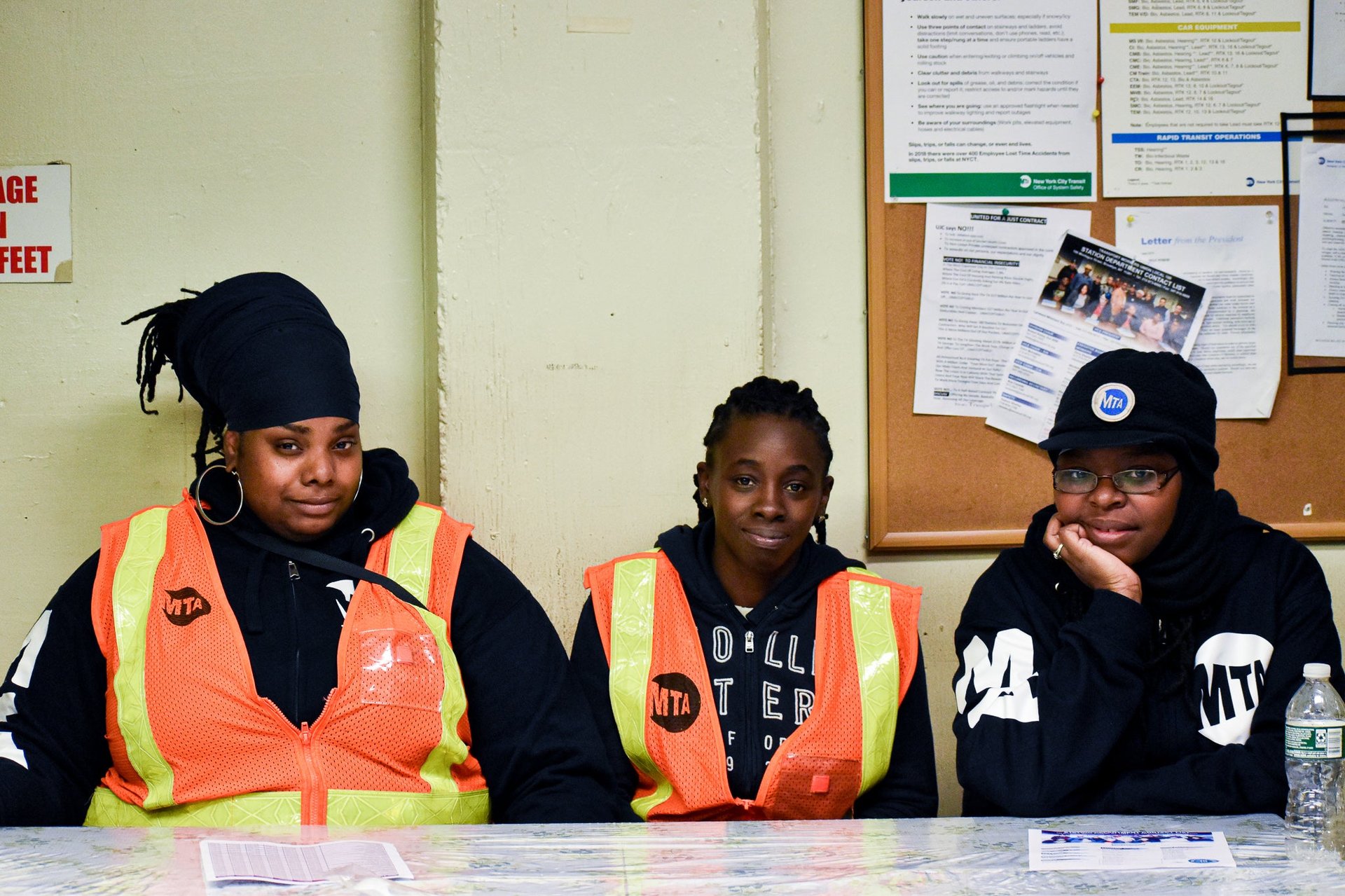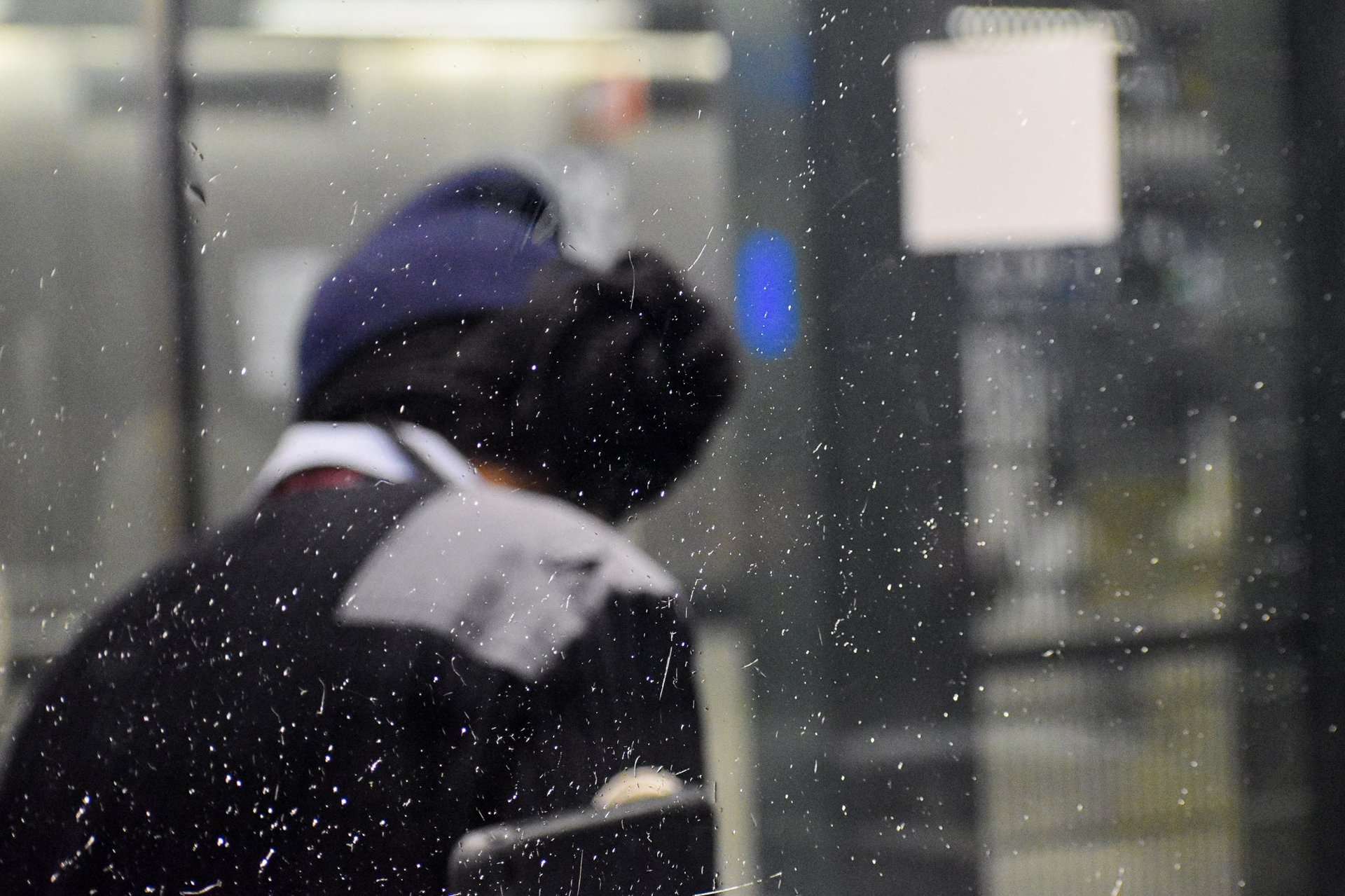Women in America’s largest transit system are underground—and under attack
As a subway rider flings bags of garbage down a long escalator to her right, Yolanda, a train operator, flashes a smile that only 27 years of experience could muster; she’s used to what happens in the New York City subway after 2 am.


As a subway rider flings bags of garbage down a long escalator to her right, Yolanda, a train operator, flashes a smile that only 27 years of experience could muster; she’s used to what happens in the New York City subway after 2 am.
“This shift is kind of hard. You get a lot of—” she paused, gesturing to the man on the escalator, “characters.”
Yolanda, who preferred not to give her last name due to privacy and safety concerns, is a mother of twins in their twenties. Working on the trains is an ingrained part of her life. On a recent night, at the 1 train’s final stop, she took a brief break from her overnight shift to offer a glimpse into the transit system she knows so well.
In her decades underground, Yolanda has seen misogyny in transit more times than she can recall. Too frequently, she said, it shows up in unrealistic expectations passengers have for her or the women around her.
A male rider once asked her to turn the heat on. She said train operators don’t control that system. He responded by saying that if it were a man running the train, he could surely warm it up. “If the problem can’t be fixed, their mentality is that if it were a man doing the job, they’d be able to fix the problem,” Yolanda said.
Moments like this can be particularly challenging for women. Most of all, female employees fear assaults, which are happening more frequently—the number of conductors and operators who have been assaulted rose by 39% from 2018 to 2019, according to the Transport Workers Union.
The Metropolitan Transportation Authority (MTA), which runs New York City’s subways and buses, has a $16 billion annual budget it uses to make possible 1.7 billion rides per year. It runs 24 hours a day, seven days a week.
Women in transit—from train conductors and cleaners to riders—often face harsher conditions than their male counterparts. Fearing gender-specific assaults and harassment, female transit workers in New York City are finding ways to fight against and cope with the consistently challenging environments in which they travel and work—strategies that tend to differ than their male counterparts often out of sheer necessity.

The women of America’s largest transit system
Johanna Julian cleans stations on the 2nd avenue Q line. MTA employees in this role are some of the most vulnerable in the system, as they are not protected by a locked door in a station booth or a train car. Working in this job on the overnight shift, as Julian usually does, is even more nerve-wracking. She says that she keeps her phone on her, though her managers tell her to store it in the locker room, to feel an extra level of protection as she cleans in secluded areas throughout the long station.
Julian is also frustrated with the disconnect between how her supervisors and station manager (her boss’ boss) tell her to protect herself from the threat of violence, and her reality every day.
“We get cursed out, approached, followed, harassed— some people getting physically assaulted. It’s ridiculous. [Higher-ups] want you to always keep your head on a swivel and be vigilant, but you have to protect yourself at the same time,” she said.
Julian often works closely with two other female cleaners, Marsha Warden and Zaire Stevens, at an Upper East Side station in Manhattan. The women find solace in numbers.
“If you’re by yourself in a big station, who’s gonna know what happened to you?” Warden asked.
Working together, and particularly working together with other women, is one way women have figured out how to protect themselves. Male MTA workers are less likely to be aware of their surroundings and on the alert to other men around them, the women said.
“They tend to not pay attention as much,” Julian said.
“We’re more guarded,” Stevens added.
“Because women understand what women got to go through,” Warden said.
Working in teams makes sense to these women, who, as overnight workers, are often surrounded by intoxicated or aggressive customers.
“I get told every day by my mother, ‘be careful out there by yourself.’ And I tell my momma, ‘I’m not by myself,’ and she feels more safe because I’m not by myself, I work with other people around me,” Warden said, to the nods of the other women at the break room table with her.

The subway is, by many measures, a difficult place to work. Employees say the air quality in the stations and tunnels is deteriorating. As the New York Times reported, train personnel must deal every day with riders’ anger about the worst on-time performance of any major transit system in the world. No one is quite sure why the number of assaults is on the rise, or what can be done to stop them completely.
The people interviewed for this story are among the 13,500 (18%) of MTA employees who are women, out of the 75,000-member state-run workforce. That’s not a lot, considering women made up 59% of New York City’s municipal employees in 2017. But in the male-dominated transportation industry, ratios like the MTA’s are not uncommon.
Having more women around in general would be helpful for the whole system, booth worker Alexis Simone Webster said. Webster doesn’t work at one stop as many booth workers do; instead she switches between stations on a weekly basis, covering for colleagues who are on vacation or other forms of leave.
A mother of two, she prefers to work the overnight shift so she can walk her son to school in the mornings. But these late hours mean that she interacts with few other female MTA employees. “A lot of women in transit work mornings and afternoons, but you don’t really see that many night women,” Webster said.
Being in the company of women, she said, would make her feel more safe. Unlike her male counterparts, she said, she never leaves the booth unless there are police present. “I’m really glad the booth is covered with glass—my only protection,” Webster said.
Hesitant to make generalizations, Webster said that while all train personnel are vulnerable to being attacked, women are more likely to be targeted by male riders. “I feel like a lot of females get attacked, because men feel like because they’re stronger than us, they can attack us,” she said.
Women in the MTA, especially those who work overnight, are constantly balancing their safety against gender-based harassment and the technical frustrations of the nightly grind. All of the women interviewed for this article say that customers harass them in different ways than they do their male counterparts.
“The main difference between a woman and a man is that people try women more than they would try a man. They will threaten us, a woman, before they would threaten a man,” said 24-year-old Asha Lawrence, who has worked as a conductor for 11 months.
A recent graduate from the University of Albany and a lifelong New Yorker, she was daunted at first by the thought of working on the train. She explained her initial concerns while standing on an open-air platform in Harlem, close to her home borough, the Bronx. She expected passenger bias against women, citing erratic people she knows take the train overnight.
“Because we are females, they take us for granted,” she added.
Some women like Lawrence are alone underground during their shifts and often don’t have the option of strength in numbers. “Always protect yourself first,” Lawrence began, “If someone is becoming hostile, I’ll remove myself.” She tells other employees to call the control center at the first sign of disruption and is grateful that she is able to lock the doors on the conductor’s booth to separate herself from any surrounding commotion.
Lawrence also finds solace in her faith, praying for safety in the face of New York City uncertainty at the start of her day. “Conductors get assaulted a lot, it’s not in the media as much but we do, so I pray every morning ‘God, please let it be a good day,’” she said.
Cameras and convex mirrors
Sally Librera has shaped her life around planning how everyday people get around urban spaces. She started working for the MTA in 2004 as a transportation planner; in the 15 years since, she has worked her way up to become the senior vice president for subways at MTA New York City Transit.
Librera is the first woman to hold her position in the MTA— an accomplishment, she said, that sends an “important message” through the “entire workforce and our industry” that the leadership team does a better job of representing “not just diversity of gender but diversity of perspective.” There are other influential women in MTA’s leadership, Librera said, such as MTA Managing Director Veronique Hakim and Metro North Railroad President Catherine Rinaldi. They make up a growing number of women at the top levels of the organization.
A mom to three boys—ages 8, 10, and 12—Librera hopes that her involvement in the MTA can help bolster the number of women, and people from other diverse backgrounds, in a field where their representation is lower than that of the larger public.
“I don’t think its specific to New York City Transit or the MTA—it’s an industry-wide phenomenon that women aren’t as represented as they are in the general population,” she said in an interview. Librera understands that women on the job face unique challenges. “Some of those nuances of those challenges are different based on when and where people work, and I think, generally speaking, some of those challenges are experienced differently by women than they are by men,” she added.
During her tenure, Librera has been a main point of contact in the discussion on safety and employee assaults.
“We have zero tolerance for any sort of incidents in our system. That said, the assaults on our employees are real. Whether that’s a very big number or a small number, it doesn’t matter to me. Any one of those incidents is one too many,” Librera said.
The organization is working to increase employees’ “levels of and perception of security,” Librera said. MTA’s written policy (pdf, pg 74) states that it takes “reasonable and necessary steps to provide a workplace free of violence for MTA employees.” It has assessed which classes of employees are at risk, such as those who exchange money with the public, and says it has taken steps to minimize that risk, such as more cameras and convex mirrors to the stations, along with “help points” that allow staff or riders to call for assistance. If an employee believes that “an imminent danger exists,” they can submit a written note to their supervisor. Additionally, following sexual harassment or assault situations, the MTA has a reporting form available online for riders and workers alike to fill out. In the case of an assault, Librera also suggests that employees reach out to their supervisors or to law enforcement. To increase the Librera said,
The MTA also invites employees to participate in focus groups run by its diversity and inclusion office. Although open to all genders, the group, called “Empowering Women in Transit,” is supposed to serve as an avenue for female employees to suggest what could make them feel safer. “This is a place where women can bring their unique perspectives, where women can bring their challenges,” Librera said.
Librera encourages women employees to reach out to MTA leadership directly, saying, “The most important thing we can do as a leadership team, both for our employees and also for our customers, is to set up as many different forms for engagement and two-way communication as possible.”

Life underground
Employees tell a different story about what it’s like on the ground. Female employees in particular say MTA leadership doesn’t do enough to protect workers who risk attack every day. “It’s always been a man’s type of world to them and they have yet to acknowledge us as women working here,” Yolanda said of the men who run the MTA, standing next to a 1 train at its last stop, South Ferry in Manhattan.
Julian says that her managers tell her and colleagues to not engage with harassers and only defend herself physically if someone has hit her first.
When men approach and harass her, which, as an employee without a booth or locked door on a train, happens more frequently than she would like, Julian feels frustrated by transit leadership’s advice to avoid these moments altogether (an MTA spokesperson declined to directly address this).
“They think you can just run away in every situation, but if I’m in the back and a man comes and corners me, then what? How can I run away?” she asked.
Marcha Warden, Julian’s coworker, is also concerned that when customers, primarily men, approach her, there is nothing she can do unless the potential perpetrator has already made physical contact and inflicted damage.
“We can’t [physically] defend ourselves because then we get in trouble; we get reprimanded. That’s not fair to us, because then we’re beat the fuck up.” (In response to Quartz’s question about policies regarding how employees are expected or able to defend themselves, an MTA spokesperson declined to offer specifics, instead responding: “The safety of our employees and customers is the MTA’s top priority, and policy regarding addressing potential risks are consistent with that mandate.”)
Women in transit around the world
It’s not just New York—women face disproportionate harassment, as both passengers and as workers, on public transportation around the world.
A 2017 survey by the European Transport Workers’ Federation, which covers all transportation workers in the European Union, found that 80% of women employees felt that after filing a complaint, the workplace was not safer and that their assailants or harassers felt no ill effects. In India, 88% of the riders who said they had experienced sexual harassment at a station were women, according to a Safecity Railway Audit report. In Egypt, 86.5% of women said they feel insecure and unsafe on public transportation, UN Women found.
And yet, transit systems in other countries have tried different ways to protect its female employees and passengers. Since 2000, Japan has offered passengers single-sex carriages, which nearly 70% of women in the area say they support. The move came as a way to combat chikan, or groping, on public transportation. In China, as part of a project in Liaoning province, women were involved in the decision-making process to build up the system. Their input on how to avoid poor lighting, long wait times, and potentially hazardous passenger walkways helped to create a more welcoming system. The MTA is not currently considering any of these specific initiatives, but MTA leadership said they are reaching out to their employees and riders through the “Fast Forward” plan to hear new, innovative ideas.
For Webster, increasing female participation throughout the MTA is step one. Female union representatives could visit female workers; greater police presence could protect women as they walk out of the station. “Anything involving women—yes. There’s more men than women down here, so the more women the better.”